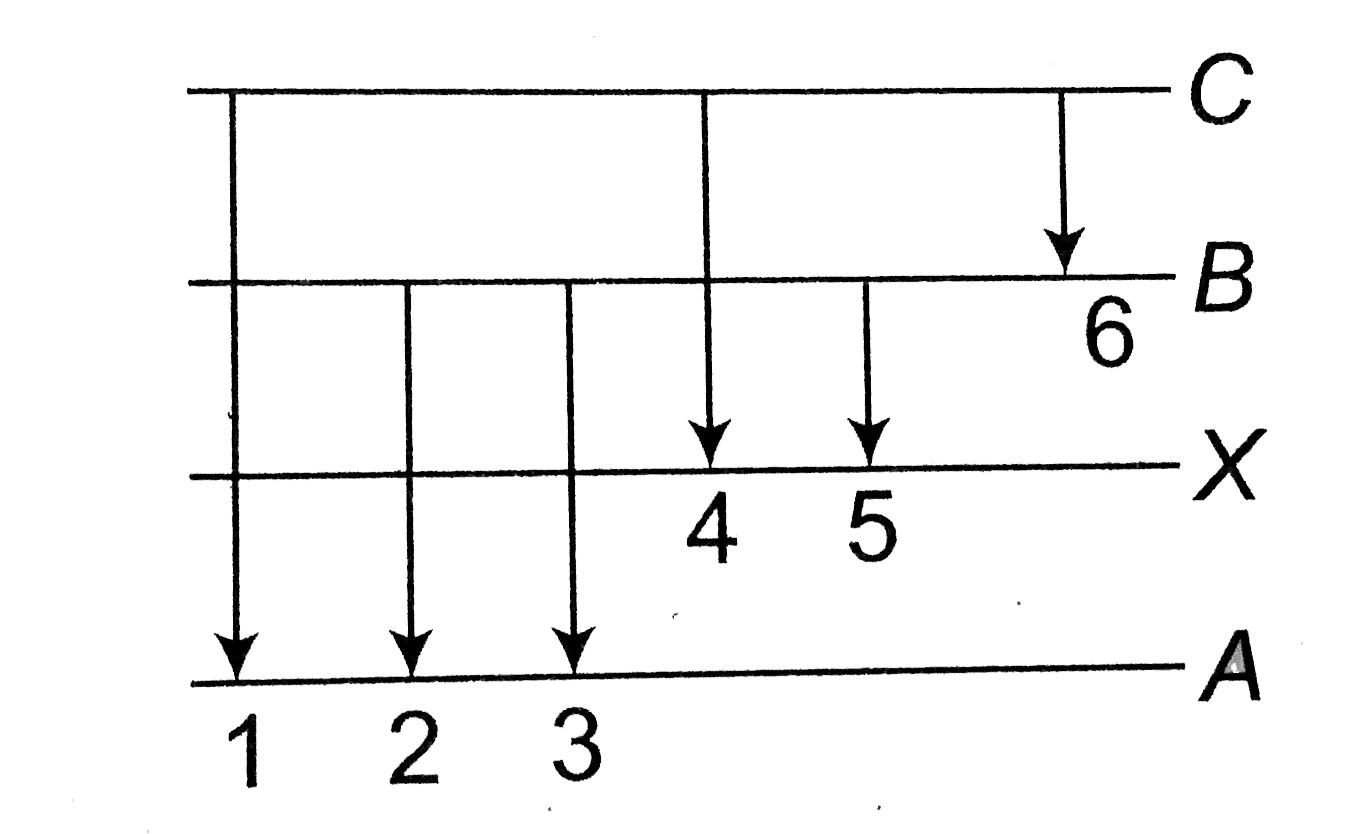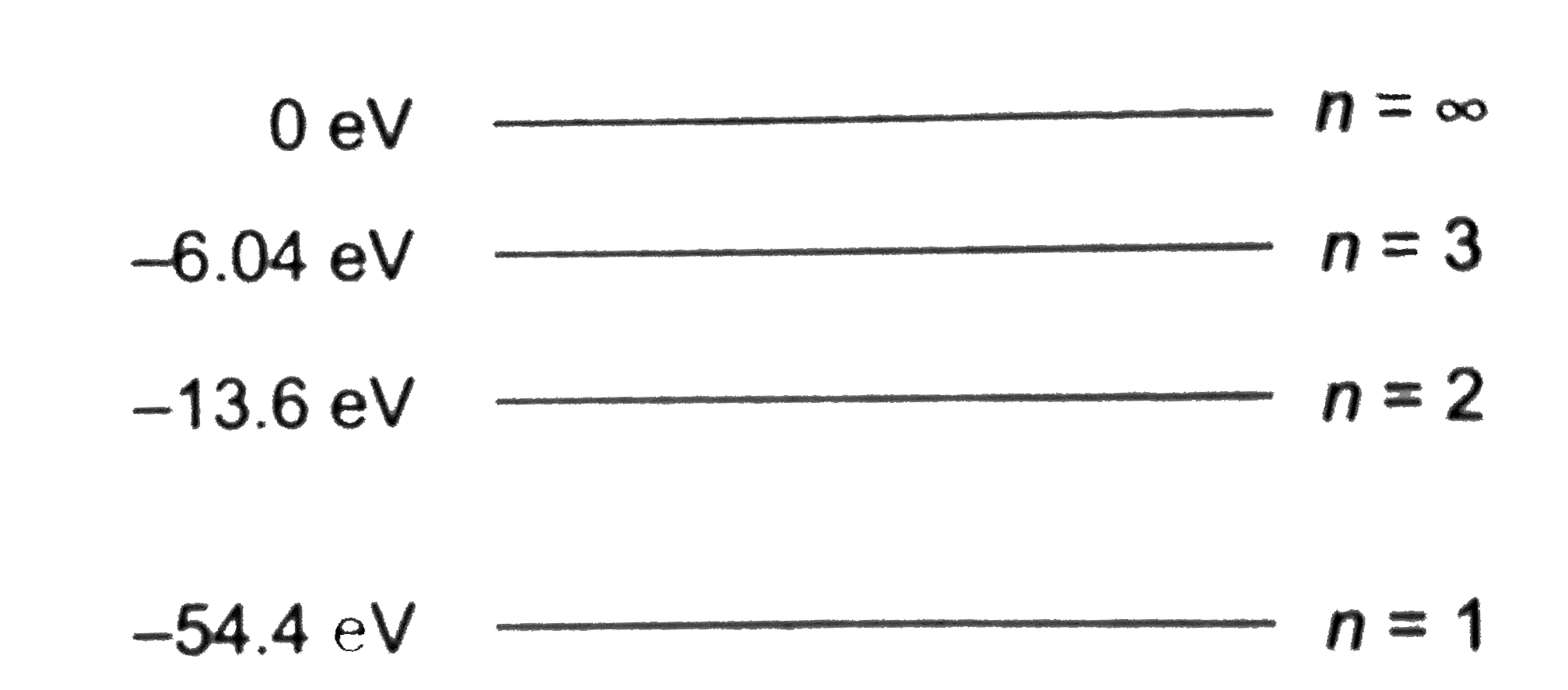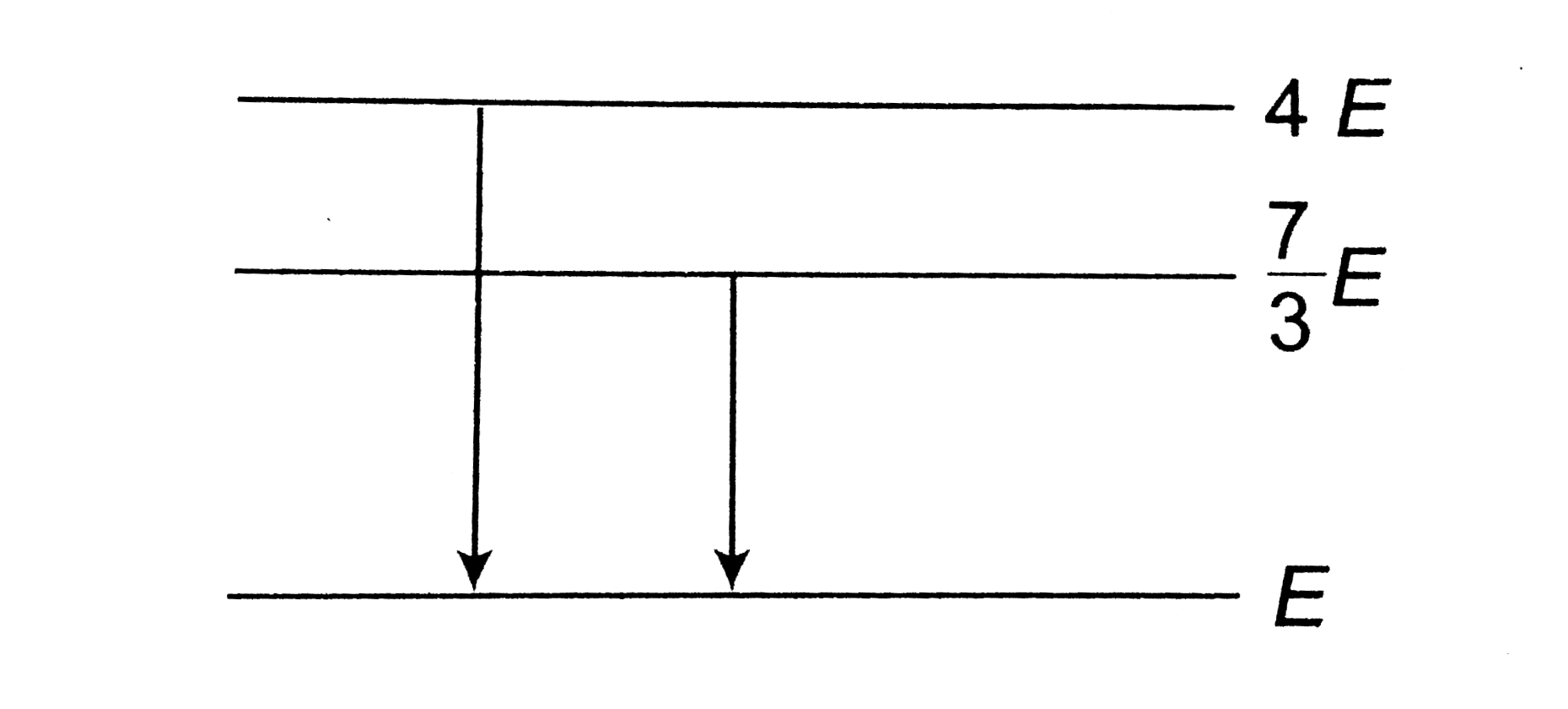Complete Solutions to Problems Based On Mixed Concepts of chapter ATOMIC PHYSICS of Class 12 book with complete answers and questions
| Class 12 | PHYSICS |
| Chapter | ATOMIC PHYSICS |
| A2Z | Problems Based On Mixed Concepts |
| Number Of Questions | 43 |
| Academic Year | 2023-24 |
A cathode ray tube contains a pair of parallel metal plates `1.0 cm` apart and `3.0 cm` long. A narrow horizontal beam of electron with a velocity of `3 xx 10^(7) ms^(-1)` is passed down the tube midway between the two plates. When a potential difference of `550 V` is maintained across the plates, it is found that the electron beam is so deflected that it just strikes the end of one of the plates. then the specific change of an electron (that is, the ratio of its charge to mass) in `C//kg` is :
04:15View SolutionIn Millikan's oil drop experiment an oil drop of radius `r` and change `Q` is held in equilibrium between the plates of a charged parallel plate capacitor when the potential change is `V`. To keep a drop radius `2r` and with a change `2Q` is equilibriu between the plates the potential difference `V'` required is:
04:47View SolutionThe ratio of the speed of the electrons in the ground state of hydrogen to the speed of light in vacuum is
02:22View SolutionIn hydrogen atom, electron makes transition from `n = 4` to `n = 1` level. Recoil momentum of the `H` atom will be
02:22View SolutionA sodium atom is in one of the states labelled 'Lowest excited levels'. It remains in that state for an average time of `10^(-8)` sec. before it makes a transition back to a ground state. What is the uncertianty in enegry of that excited state ?
02:48View SolutionAn energy of `24.6 eV` is required to remove one of that electrons from a neutal helium atom. The enegy (in `eV`)required to remove both the electrons from a netural helium atom is
03:17View SolutionA hydrogen atom in its ground state absorbs `10.2 eV` of energy. The orbital angular momentum is increased by
02:04View SolutionHydrogen `(H)`, deuterium `(D)`, singly ionized helium `(He^(+))` and doubly ionized lithium `(Li)` all have one electron around the nucleus. Consider `n = 2` to `n = 1` transition. The wavelength of emitted radiations are `lambda_(1), lambda_(2), lambda_(3)` and `lambda_(4)` respectively. then approximately
03:01View SolutionThe number of revolutions per second made by an electron in the first Bohr orbit of hydrogen atom is of the order of `3`:
02:39View Solution`alpha`-particles of enegry `400 KeV` are boumbardel on nucleus of `._(82)Pb` . In scattering of `alpha`-particles, it minimum distance from nucleus will be
02:55View SolutionIf in Rutherford's experiment, the number of particles scattered at `90^(@)` angle are `28` per min, then number of scattered particles at an angle `60^(@)` and `120^(@)` will be
02:14View SolutionAn `alpha`-particle with a kinetic energy of `2.1eV` makes a head on collision with a hydrogen atom moving towards it with a kinetic energy of `8.4 eV`. The collision
03:15View SolutionAn electron in hydrogen atom after absorbing an energy photon jumps from energy state `n_(1)` to `n_(2)`. Then it returns to ground state after emitting six different wavelength in emission spectrum. The energy of emitted photons is either equal to, less than or greater than the absorbed photons. then `n_(1)` and `n_(2)` are
04:50View SolutionOne of the lines in the emission spectrum of `Li^(2+)` has the same wavelength as that of the `2nd` line of Balmer series in hydrogen spectrum. The electronic transition corresponding to this line is:
03:09View SolutionA double charged lithium atom is equivalent to hydrogen whose atomic number is `3`. The wavelength of required radiation for emitted electron from first to third Bohr orbit in `Li^(++` will be (Ionization energy of hydrogen atom is `13.6 eV`)
03:19View SolutionThe ionisation potential of `H`-atom is `13.6 eV`. When it is excited from ground state by monochromatic radiations of `970.6 Å`, the number of emission lines will be (according to Bohr's theory)
02:25View SolutionIn the figure six lines of emission spectrum are shown. Which of them will be absent in the absorption spectrum.
 05:23View Solution
05:23View SolutionAn orbit electron in the ground state of hydrogen has an angular momentum `L_(1)`, and an orbital electron in the first orbit in the ground state of lithium (dounle ionised positively) has an angular momentum `L_(2)`. Then :
02:16View SolutionConsider atoms `H, He^(+), Li^(++)` in their ground states. Suppose `E_(1), E_(2)` and `E_(3)` are minimum energies required so that the atoms `H He^(+), Li^(++)` can achieve their first excited states respectively, then
02:01View SolutionElectrons in a sample of gas containing hydrogen-like atom `(Z = 3)` are in fourth excited state. When photons emitted only due to transition from third excited state to second excited state are incident on a metal plate photoelectorns are ejected. The stopping potential for these photoelectorns is `3.95 eV`. now, if only photons emitted due to transition from fourth excited state to third excited state are incident on the same metal plate, the stopping potential for the emitted photoelectrons will be appoximetely equal to
03:38View SolutionConsider atoms `H, He^(+), Li^(++)` in their ground states. If `L_(1), L_(2)` and `L_(3)` are magnitude of angular momentum of their electrons about the nucleus respectively then:
02:02View SolutionA neutron with velocity `V` strikes a stationary deuterium atom, its kinetic energy changes by a factor of
04:58View SolutionImagine an atom made up of a proton and a hypotnerical particle of double the mass of the electron but having the same charge as the electron. Apply the Bohr atom model and consider all possible transitions of this hypotnetical photon that will be emitted has wavelength `lambda` (given in terms of the Rydberg constant `R` for the hydrogen atom) equal to
04:06View SolutionIf first excitation potential of a hydrogen-like atom is `V` electron volt, then the ionization energy of this atom will be:
02:08View SolutionThe energy that should be added to an electron, to reduce its de-Broglie wavelength from `2 xx 10^(-9)m` to `0.5 xx 10^(-9)m` will be:
02:15View SolutionIf we assume that perptraing power of any radiation/particle is inversely proportional to its de-Broglie wavelength of the particle then:
02:46View SolutionA hydrogen atom in the `4th` excited state, then:
03:03View SolutionTwo hydrogen atoms are in excited state with electrons in`n=2` state.First one is moving to wards left and emits a photon.' of energy `E_(1)` towards right. Second one is moving towards right with same speed and emits a photon of energy `E_(2)` towards right. Taking recoil of nucleus.into account during_emission process :
03:40View SolutionA hydrogen like atom with atomic number Z is in an excited state of quantum number 2n. It can emit a maximum energy photon of 204 eV. If it makes a transition to quantum state n, a photon of energy 40.8 eV is emitted. Find n, Z and the ground state energy (in eV) of this atom. Also calculate the minimum energy (in eV) that can be emitted by this atom during de-excitation. Ground state energy of hydrogen atom is – 13. 6 eV.
06:21View SolutionConsider a hydrogen-like atom whose energy in nth excited state is given by
`E_(n) = (13.6 Z^(2))/(n^(2))`
When this excited makes a transition from excited state to ground state , most energetic photons have energy
`E_(max) = 52.224 eV`. and least energetic photons have energy
`E_(max) = 1.224 eV`
Find the atomic number of atom and the intial state or excitation.07:37View SolutionThe enegry level diagram for an hydrogen-like atom is shown in the figure. The radius of its first Bohr orbit is
 02:48View Solution
02:48View SolutionHow much work must be done to pull apart the electron and the proton that make up the Hydrogen atom, if the atom is initially in the state with `n = 2` ?
02:40View SolutionThe ratio of ionization energy of Bohr's hydrogen atom and Bohr's hydrogen-like lithium atom is
01:50View SolutionWhat is the angular momentum of an electron in Bohr's hydrogen atom whose energy is `-0.544 eV`?
01:44View SolutionIn a sample of hydrogen-like atom all of which are in ground state, a photon beam containing photos of various energies is passed. In absorption spectrum, five dark lines, are observed. The number of bright lines in the emission spectrum will be (assume that all transitions takes place).
02:32View SolutionA monochromatic radiation of wavelength `lambda` is incident on a sample containing `He+`. As a result the Helium sample stars radiating. A part of this radiation is allowed to pass through a sample of atomic hydrogen gas in ground state. It is noticed that the hydrogen sample has stared emitting electrons whose maximum kinetic energy is `37.4 eV`.
`(hc = 12400 eV Å)`. Then `lambda` is03:15View SolutionAn electron of the kinetic energy `10 eV` collides with a hydrogen atom in `1st` excited state. Assuming loss of kinetic energy in the collision be to quantized which of the following statements is correct?
02:52View SolutionA hydrogen atom emits a photon corresponding to an electron transition from `n = 5` to `n = 1`. The recoil speed of hydrogen atom is almost (mass of proton `~~1.6 xx 10^(-27) kg)`.
02:57View SolutionThe ratio between total acceleration of the electron in singly ionized helium atom and hydrogen atom (both in ground state) is
02:42View SolutionIf the series limit of Lyman series for Hydrogen atom is equal to the series limit Balmer series for a hydorgen like atom, then atomic number of this hydrogen-like atom will be
04:49View SolutionThe following diagram indicates the energy levels of a certain atom when the system moves from `4E` level to `E`. A photon of wavelength `lambda_(1)` is emitted. The wavelength of photon produced during its transition from `(7)/(3)E` level to `E` is `lambda_(2)`. the ratio `(lambda_(1))/(lambda_(2))` will be
 02:28View Solution
02:28View SolutionAn electron beam accelerated from rest through a potential difference of `5000 V` in vacuum is allowed to impinge on a surface normally. The incident current is `50 muA` and if the electrons come to rest on striking the surface, the force on it is:
04:03View SolutionImagine an atom made of a proton and a hypothetical particle of double the mass of the electron but having the same change as the electron. Apply the Bohr atom model and consider all possible transitions of this hypothetical particle of the first excited level. the longest wavelength photon that will be emitted has wavelength [given in terms of the Rydberg constant `R` for the hydrogen atom] equal to
03:25View Solution
Problems Based On Mixed Concepts questions and complete solutions for chapter ATOMIC PHYSICS of A2Z PHYSICS (HINGLISH) of Class 12
